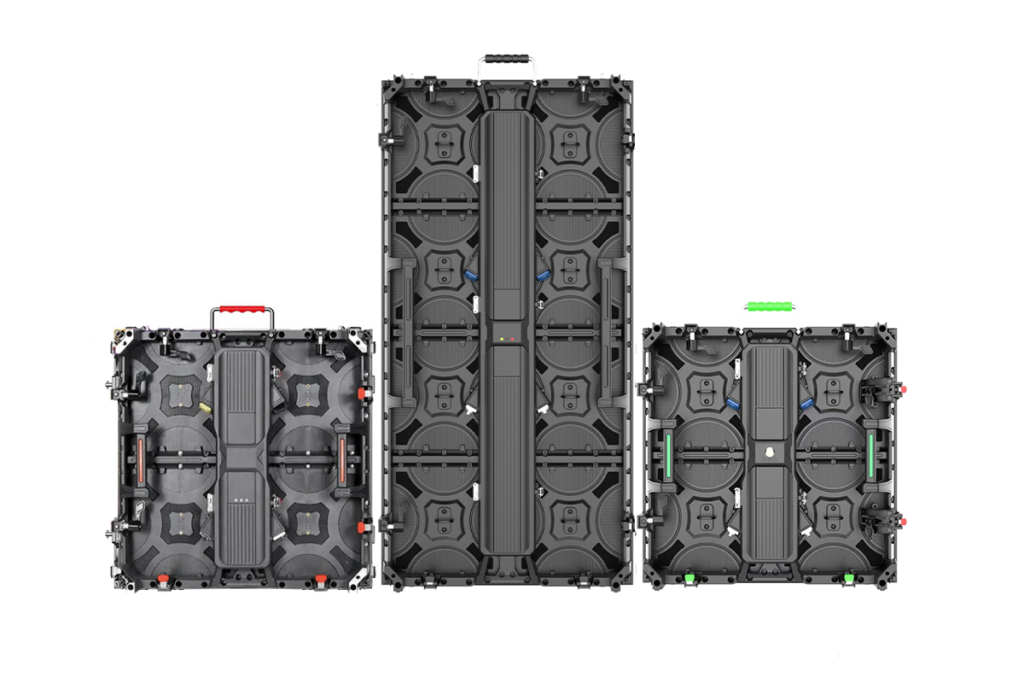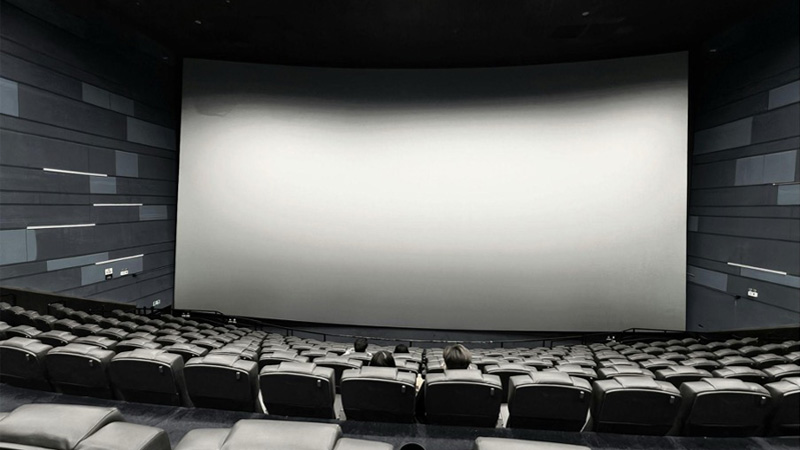4K and UHD (Ultra High Definition) are usually used together and end up confusing customers. Yes, they are closely linked, but the technology has slight differences that affect your viewing experience.
The following blog will discuss the basics, key differences between 4K and UHD, the rise of 4K and UHD, the benefits of 4K and UHD, factors to keep in mind before investing in one, and more.
1. Understanding The Basics of 4K and UHD
What is 4K and UHD? The horizontal resolution of a display is called 4K, which has 4096 pixels, to be precise. The term is interchangeably used with UHD. According to Business Research Company, the market size of 4K TV has considerably grown in recent years and is projected to soar further at a CAGR of 24.2%. It shared a value of $229.73 billion in 2023 and will reach $285.28 billion in 2024.
On the other hand, UHD stands for Ultra High Definition. The term becomes broad since there are multiple types of display resolutions that come under its umbrella, exceeding the standard 1080p. 4K does come under the common UHD resolution category. However, it’s not the only one.
2. Major Differences Between 4K and UHD
As discussed in the introduction above, the terms are closely interconnected, but the screens still have major technical differences. Curious to learn? They are as follows:
- Resolution
The first difference is resolution. When we talk about 4K it particularly refers to a horizontal resolution that consists of 4096 pixels. While UHD unlocks a broader category that includes 4K but also holds 8K which is a part of other high-resolution formats.
- Aspect Ratio
Next in line is the aspect ratio. 4K TV has a 16:9 aspect ratio, this aspect ratio is standard for most televisions and monitors. Over here, UHD takes the lead as unlike 4K, it is not confined to the standard ratio and can accommodate different aspect ratios without displaying any kinds of barriers.
- Color Gamut
Then, we have a color gamut. It is not related to resolution but serves to be a unique selling point, especially for UHD. The Ultra High Display usually amazes consumers when they see wider color gamuts offering richer and more accurate colors.

3. The Rise of 4K and UHD
4K and UHD have gained many votes from consumers in recent years. The reasons are driven by the following factors:
- Increased Content Availability
Content creators and streaming platforms like Netflix are attracting audiences by offering UHD and 4K content. The viewing results are better than those of traditional screens.
- Technological Advancements
Technology has been upgrading itself, improving every device on its course. In these updates, display technologies are not left behind as they have evolved to support higher resolutions at reasonable prices. The pricing factor encourages consumers to purchase the 4K TV and enjoy the viewing experience at their premises.
- Consumer Preferences
With time, even consumer preferences have changed. They no longer want to watch their favorite shows on low-quality screens and look forward to viewing the screen comprising sharper details and vibrant colors, taking the viewing to the next level.

4. Advantages of 4K and UHD
4K has stolen the limelight in the TV market, and there is no doubt that 4K and UHD have revamped the way we experience visual content. These updates offer a drastic leap of benefits when it comes to image quality as they deliver a more lifelike viewing experience as if you are present there in the scene. Do you want to learn more? They are as follows:
- Sharper Images
Gone are the days of pixelated images and blurry details. Immerse yourself in visuals so sharp and precise that every intricate detail comes to life. From the delicate textures of a character’s clothing to the breathtaking landscapes of your favorite movie, 4K and UHD deliver a level of image quality that transports you directly into the scene.
- Improved Color Accuracy
You get to view rich and accurate colors. How? All the credits go to these displays that support improved color accuracy. The UHD especially offers a wider color gamut that leads to a splash of vibrant colors and makes it a lifelike experience for the audience.
- Increased Contrast
Advanced technologies like High Dynamic Range (HDR) are often found in 4K and UHD. You must be wondering what the high dynamic range is. The answer is that these are responsible for delivering brighter whites, deeper blacks, and contrast at an enhanced degree for a more dynamic picture.
- Immersive Viewing Experience
When you are at a stadium or walking through the city center, you see the large screens showing you different visuals of the concert, game, or any advertisement. How do you enjoy looking at them? It’s all because of the 4K and UHD technology that provide you with increased pixel density, which removes pixelation and promises a smooth and detailed image.
- Cinematic Experience
Your wish of creating a home theatre system just got fulfilled as 4K and UHD offer you an opportunity to bring cinema to your home. Yes, you read that right, these screens can reproduce a cinematic experience. Therefore, you won’t have to stand in long queues or pay for the ticket. Make some popcorn and enjoy the movie from the comfort of your home.
- Gaming Enhancement
If you are into gaming, then you will love having 4K and UHD at your disposal. Replace your previous screens and embrace the new technology. Why? It startles you with smoother gameplay, faster response time, and detailed visuals. When these elements join hands, you get a competitive edge.
- Future-Proof Technology
4K is swiftly taking over the market as more and more people prefer to buy it to elevate their viewing experience. The 4K content is growing, and looking at that, the number of 4K movies, TV shows, and streaming services is amplifying at an equal pace.
- Technological Advancements
Technology is advancing at a rapid pace, and display resolution is no exception. With a constant push for higher-quality visuals, it’s clear that 4K and UHD are the future of television.
By investing in a 4K or UHD display, you’re not just enjoying superior picture quality today, but you’re also future proofing your entertainment setup. As technology evolves, you’ll be equipped to handle the next wave of higher-resolution content without needing to upgrade your TV.

5. Disadvantages of 4K and UHD
While 4K and UHD offer significant advantages, it’s essential to consider the potential drawbacks:
- Hardware Costs
The screens look appealing, but they also emerge with a heavy price tag that will compel you to think before heading out to buy one. 4K and UHD TVs and displays demand more money than their Full HD counterparts.
- Content Costs
There is a wide availability of 4K content, but keep in mind that if you want to access the premium content, then that requires you to subscribe or purchase additional hardware such as 4K Blu-ray players. And that fee is tricky as the amount is on the higher-end and you might want to compromise with regular content you see.
- Content Is Limited
One of the primary drawbacks of 4K and UHD technology is the relatively limited availability of native content compared to Full HD. While the number of 4K and UHD movies, TV shows, and streaming services is growing rapidly, there’s still a gap in the overall content library.
This can be frustrating for early adopters who invest in expensive 4K or UHD displays but find themselves with limited options to fully utilize the technology’s potential.
- Streaming Requirements
If you plan to stream 4K, then that requires high internet speed, and maybe your internet’s speed might not be compatible with its pace. Again, that is a matter of concern for users who don’t have fast internet access.

6. What To Consider When Choosing Between 4K and UHD?
When you go shopping, you consider a few factors that will make your buying decision easier. The same formula is applicable here as well, as you must keep the following factors in mind when choosing between 4K and UHD:
- Content Availability
The first and foremost factor is the availability of content. While the number of 4K and UHD movies, TV shows, and streaming services is increasing rapidly, there’s still a gap compared to Full HD. Ensure that you have access to sufficient 4K/UHD content to justify the investment.
- Size of the Screen
The size of the screen plays a crucial role in offering higher resolutions, so do a thorough market survey instead of impulsive buying.
- Budget
What is your budget? UHD and 4K displays are not of the same price, they vary so see if your budget allows you to make this massive move.
- Personal Preferences
Preferences vary among individuals especially when buying a superior display, some want it should have features like HDR or refresh rate over resolution. Hence, see what characteristics you prefer to make your viewing experience better.
7. Redefine Your Viewing Display
Have you been planning to redefine your indoor and outdoor viewing displays? Then get in touch with us, LEDSINO, as we allow you to enter a world of magnificent resolution. We are experts in providing LED posters, flexible LED displays, stadium-led screens, and other LED displays that can be made according to your requirements.
Immerse yourself in stunning 4K clarity. Witness every detail come to life with unparalleled picture quality. Say goodbye to pixelated distractions and hello to a world of vibrant colors and sharp images.
Whether it’s a thrilling sports match, a captivating series, or a mesmerizing movie, our LED displays deliver an unforgettable viewing experience.

- Soft Connection – Well-organized Layout
- Optional Hidden Wire – Easy Maintenance
- Rear Screws Securely Fix the LED Modules
- Optional Cabinet Size and Handle Color
- Optional Curved Lock and Angled Cabinet

- Standard Modules Front/Rear Service
- Standard Size: 320x320mm/960*960mm
- High Precision Cabinet – Excellent Flatness
- With 3 Years Warranty and 5% Spare Parts
8. Conclusion
The world of visual entertainment is undergoing a revolution, and 4K and UHD are at the forefront. While the terms are often used interchangeably, there are subtle distinctions. Regardless, both technologies deliver a viewing experience unlike any other.



